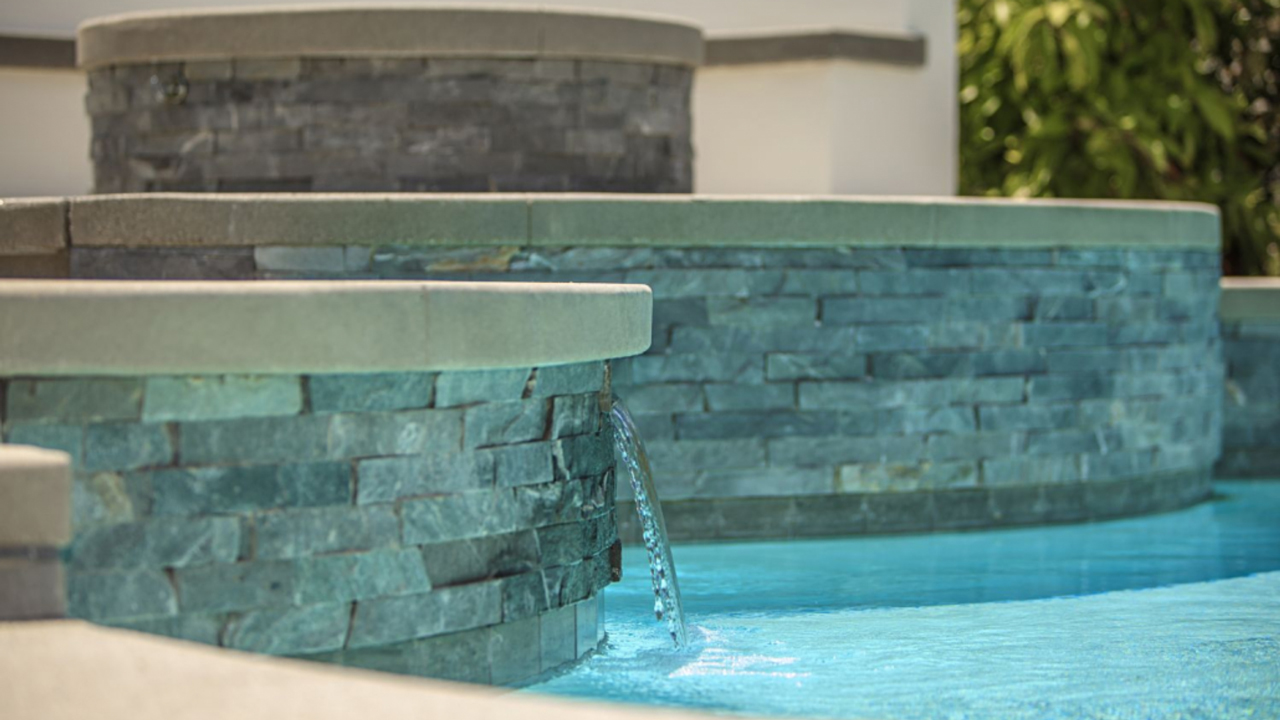When you envision your dream pool area, you likely imagine a beautiful and inviting space where you can relax, entertain, and create lasting memories with family and friends.
Achieving this vision involves careful planning and attention to detail, with one crucial element being the retaining wall that surrounds your pool.
The Importance of a Retaining Wall for Pools
A retaining wall serves several essential purposes in a pool area:
- Safety and Structural Integrity - Retaining wallsRetaining walls are structures designed to hold back soil and prevent erosion in landscapes with var... provide crucial support to prevent soil erosion and maintain the structural integrity of the pool and surrounding spaces. They ensure that the ground stays in place and doesn't encroach on the pool area.
- Aesthetic Appeal - Beyond their functional role, retaining walls can significantly contribute to the overall aesthetics of your pool environment. They offer opportunities for creative design that can enhance the visual appeal of your outdoor oasis.
- Proper Drainage - Efficient drainage is paramount in a pool area. Retaining walls help manage water runoff, directing it away from the pool and ensuring that it doesn't compromise the pool's foundation or surrounding landscape.
Choose the Right Materials and Design
When it comes to designing a retaining wall for your pool, you have numerous options to consider:
- Wall Materials - Selecting the right materials for your retaining wall is crucial. Common choices include concreteConcrete is a composite material made from a mixture of cement, sand, gravel, and water. It is one o... blocks, natural stone, or even decorative concreteDecorative concrete refers to concrete that has been enhanced with textures, colors, patterns, or fi... walls. Each material offers unique benefits in terms of aesthetics and durability.
- Wall Design - The design of your retaining wall can greatly impact the overall look of your pool area. Whether you opt for a classic and timeless design or a more contemporary and sleek look, your choice should complement your pool's style and surroundings.
- Visual Appeal - Beyond just functionality, your retaining wall can serve as a decorative element. Incorporate design features such as built-in planters, seating areas, or water featuresWater features, such as ponds, fountains, and waterfalls, are popular additions to residential and c... to enhance the visual appeal of your pool area.
- Proper Drainage - Adequate drainage is essential to prevent water accumulation around the pool. Consult with a hardscape contractor or a landscape architect to ensure that your retaining wall includes proper drainage solutions.
Professional Guidance and Construction
Designing and building a retaining wall for your pool area requires careful planning and expertise. It's highly advisable to work with a reputable hardscape contractor who specializes in pool environments.
They can help you navigate the design process, choose the right materials, and ensure proper drainage and construction. Here are five key steps in the process:
- Site Assessment - A professional will assess your pool area, taking into account factors such as soil conditions, drainage requirements, and any existing landscape features.
- Design Collaboration - Collaborate with a hardscape contractor or landscape architect to develop a design that seamlessly integrates the retaining wall with your pool's layout and your overall landscape design.
- Material Selection - Based on your design and aesthetic preferences, choose the appropriate materials for your retaining wall. Consider factors like durability, color, and texture.
- Construction - Skilled professionals will construct the retaining wall, ensuring that it meets structural and safety standards. Proper drainage systems will be incorporated to manage water effectively.
- Finishing Touches - The final touches, such as landscaping around the retaining wall, lighting, and other decorative features, will be added to enhance the overall appeal of your pool area.
Maintain Your Retaining Wall for Poolside Perfection
Building a retaining wall for your pool area is a significant investment in both aesthetics and functionality. To ensure it continues to serve its purpose and enhance the beauty of your outdoor oasis for years to come, regular maintenance is essential.
Here's how you can keep your retaining wall in pristine condition:
- Inspect for Damage - Regularly inspect your retaining wall for any signs of damage. Look for cracks, bulging, or any structural issues that may have developed over time. Addressing these problems promptly can prevent further deterioration.
- Clean the Surface - Depending on the materials used for your retaining wall, cleaning methods may vary. For concrete walls, a pressure washer can effectively remove dirt, stains, and algae buildup. Natural stone walls may require a gentler approach using a mixture of water and mild detergent. Always follow manufacturer guidelines and safety precautions.
- Check for Drainage Issues - Proper drainage is crucial for a retaining wall, especially around a pool area. Ensure that drainage features like weep holes or drainage pipes are free from obstructions. Remove any debris that could impede water flow and cause water to pool around the wall.
- Repair and Reinforce - If you notice minor damage, such as small cracks or loose stones, take the necessary steps to repair them promptly. For more extensive damage, consult a professional hardscape contractor to assess the situation and recommend appropriate repairs.
- Maintain Landscaping - Landscaping around your retaining wall can greatly impact its condition. Overgrown plants or tree roots can exert pressure on the wall, potentially causing damage. Regularly trim and maintain the vegetation around your pool area to prevent such issues.
- Sealing and Coating - Depending on the materials used for your retaining wall, it may benefit from sealing or coating to enhance durability and protect against moisture infiltration. Consult with a professional to determine whether sealing is necessary for your wall.
- Professional Inspection - Periodically, have your retaining wall inspected by a qualified hardscape contractor. They can identify any potential issues that may not be visible to the untrained eye and recommend necessary maintenance or repairs.
- Landscaping Enhancements - Consider periodically updating the landscaping around your retaining wall. New plantings, decorative elements, or lighting can refresh the aesthetics of your pool area and contribute to the overall appeal.
- Routine Cleaning - Regularly remove leaves, debris, and any other materials that accumulate near the retaining wall. A clean and well-maintained wall not only looks better but also reduces the risk of damage from trapped moisture.
- Reassess Drainage - Over time, the landscape around your pool area may change. Reassess the drainage around the retaining wall to ensure it effectively manages water runoff and prevents water buildup.
Poolside Paradise: Elevate Your Outdoor Living Experience with an Attractive Retaining Wall!
A well-designed and expertly constructed retaining wall is not just a structural necessity but a valuable addition to your pool area's aesthetics and functionality. Collaborate with a trusted hardscape contractor or landscape architect to ensure that your retaining wall complements your pool design, provides the necessary support, and enhances the overall ambiance of your outdoor oasis.
Transform your pool area into a secure and visually captivating space by investing in a professionally designed and built retaining wall. It's a significant step toward creating the pool paradise you've always dreamed of.
Ready to enhance your pool area with a beautifully designed retaining wall? Contact our expert team at 714-519-5009 at West Hills Masonry, your trusted hardscape contractor, for professional guidance and top-quality construction.
Elevate your pool experience with a retaining wall that combines safety, aesthetics, and functionality. Don't miss out on creating the perfect poolside retreat—get started today!

 Carlos Gonzales
Carlos Gonzales